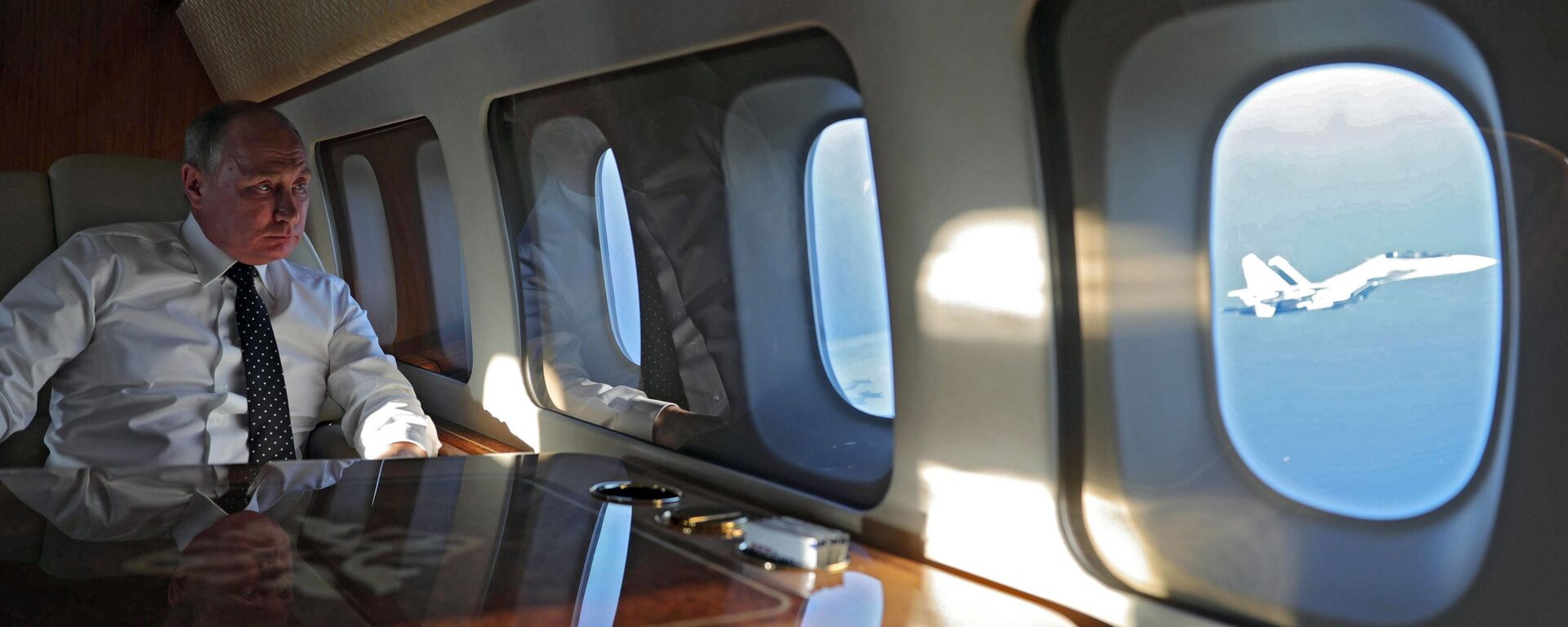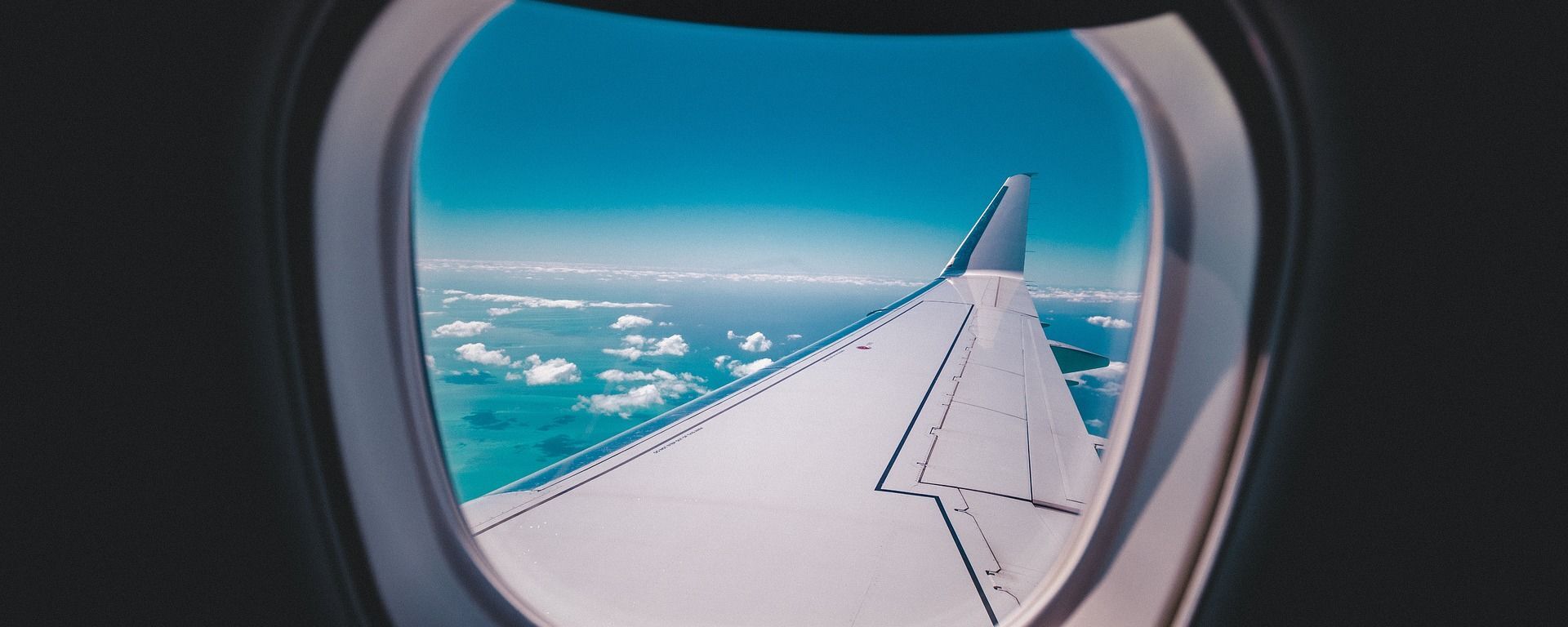https://sputnikglobe.com/20211224/under-wraps-lockheeds-x-59-supersonic-jet-testbed-spotted-en-route-to-texas-1091776989.html
Under Wraps: Lockheed’s X-59 Supersonic Jet Testbed Spotted En Route to Texas
Under Wraps: Lockheed’s X-59 Supersonic Jet Testbed Spotted En Route to Texas
Sputnik International
The Lockheed Martin X-59 QueSTT is an experimental supersonic aircraft being developed by the aerospace and defence giant’s Skunk Works division for NASA. Test... 24.12.2021, Sputnik International
2021-12-24T13:02+0000
2021-12-24T13:02+0000
2021-12-24T13:22+0000
supersonic
supersonic passenger plane
x-59
https://cdn1.img.sputnikglobe.com/img/07e5/0c/18/1091775673_0:67:1280:787_1920x0_80_0_0_72cd926257a4fe30cf7bdcb334ee1701.jpg
A photographer has snapped some photos of a X-59 testbed aircraft on its way to Lockheed Skunk Works’ Fort Worth, Texas factory.The photos, snapped by Aldo Boccaccio and published by The Drive, show the silhouette of the supersonic jet wrapped in blue plastic and fitted, tail first, aboard an oversize trailer bed in Marana, Arizona.Skunk Works has been building the X-59 at its Palmdale, California plant since 2018, with Lockheed touting the supersonic transport demonstrator for its quiet speed of sound flight – one of the key impediments to the use of supersonic aircraft commercially. Lockheed expects to carry out structural testing of the aircraft in Texas before sending it back to California for flight-testing.The X-59 testbed is built from a grab bag of components used in other US aircraft designs, incorporating an engine, propulsion system parts, the canopy and landing gear from previously produced planes, with only about 10 percent of the design completely new, according to Skunk Works. The jet is powered by a General Electric F414 engine, also used by Boeing’s F/A-18E/F Super Hornet and the EA-18G Growler electronic warfare jet. The test bed does not feature any forward visibility systems, instead relying on an artificial, remote camera system – a novel but potentially risky design choice.Lockheed expects test flights of the X-59 to start next year, and continue into the year 2023, with NASA – the aircraft’s primary customer, hoping to begin its own flights after that at the Edwards Air Force Base in California if all goes to plan. The US space agency wants to begin flying the X-59 over select cities between 2024 and 2026 to garner public feedback on noise levels.Lockheed had a separate contract with Aerion Corp to develop a supersonic business jet which was to take flight in 2023. That project was cancelled after Aerion went bankrupt this past spring. In addition, the aerospace and defence giant has proposed the SR-72 “Son of Blackbird,” a hypersonic UAV concept for intelligence, reconnaissance and surveillance operations. That project, being developed independently by Lockheed, is expected to take off by the year 2025. The SR-72 may be fitted with hypersonic weapons capability, according to developers.Lockheed isn’t the only company with ambitions to refill the gap in the supersonic jetliner market left by the death of the Concorde, the British-French turbojet-powered supersonic aircraft operated between 1976 and the early 2000s, but pulled from service following a deadly crash on a Paris to New York trip in July 2000 which killed all 109 passengers and crew onboard. The Concorde and the Soviet-built Tupolev Tu-144 (introduced in 1975 and retired in 1999) remain the only two major mass-produced commercial supersonic airliners in aviation history.Along with Lockheed, a host of US aerospace startups, Chinese aerospace engineers, and Russia’s Tupolev have presented their own takes on future jets for the supersonic aircraft market, with Russian President Vladimir Putin proposing a civilian business jet variant of the Tupolev Tu-160 bomber in 2018.
https://sputnikglobe.com/20210403/new-jet-for-kamala-harris-renderings-emerge-of-supersonic-jet-that-might-become-new-air-force-two-1082529270.html
https://sputnikglobe.com/20190212/putin-supersonic-civilian-aviation-1072357978.html
Sputnik International
feedback@sputniknews.com
+74956456601
MIA „Rosiya Segodnya“
2021
News
en_EN
Sputnik International
feedback@sputniknews.com
+74956456601
MIA „Rosiya Segodnya“
Sputnik International
feedback@sputniknews.com
+74956456601
MIA „Rosiya Segodnya“
supersonic, supersonic passenger plane, x-59
supersonic, supersonic passenger plane, x-59
Under Wraps: Lockheed’s X-59 Supersonic Jet Testbed Spotted En Route to Texas
13:02 GMT 24.12.2021 (Updated: 13:22 GMT 24.12.2021) The Lockheed Martin X-59 QueSTT is an experimental supersonic aircraft being developed by the aerospace and defence giant’s Skunk Works division for NASA. Test flights of the super quiet aircraft are expected to begin next year.
A photographer has snapped some photos of a X-59 testbed aircraft on its way to Lockheed Skunk Works’ Fort Worth, Texas factory.
The photos, snapped by Aldo Boccaccio and published by The Drive, show the silhouette of the supersonic jet wrapped in blue plastic and fitted, tail first, aboard an oversize trailer bed in Marana, Arizona.
Skunk Works has been building the X-59 at its Palmdale, California plant since 2018, with Lockheed touting the supersonic transport demonstrator for its quiet speed of sound flight – one of the key impediments to the use of supersonic aircraft commercially. Lockheed expects to carry out structural testing of the aircraft in Texas before sending it back to California for flight-testing.
The X-59 testbed is built from a grab bag of components used in other US aircraft designs, incorporating an engine, propulsion system parts, the canopy and landing gear from previously produced planes, with only about 10 percent of the design completely new, according to Skunk Works. The jet is powered by a General Electric F414 engine, also used by Boeing’s F/A-18E/F Super Hornet and the EA-18G Growler electronic warfare jet. The test bed does not feature any forward visibility systems, instead relying on an artificial, remote camera system – a novel but potentially risky design choice.
Lockheed expects test flights of the X-59 to start next year, and continue into the year 2023, with NASA – the aircraft’s primary customer, hoping to begin its own flights after that at the Edwards Air Force Base in California if all goes to plan. The US space agency
wants to begin flying the X-59 over select cities between 2024 and 2026 to garner public feedback on noise levels.
Lockheed had a separate contract with Aerion Corp to develop a supersonic business jet which was to take flight in 2023. That project was cancelled after Aerion went bankrupt this past spring. In addition, the aerospace and defence giant has proposed the SR-72 “Son of Blackbird,” a hypersonic UAV concept for intelligence, reconnaissance and surveillance operations. That project, being developed independently by Lockheed, is expected to take off by the year 2025. The SR-72 may be fitted with hypersonic weapons capability, according to developers.
Lockheed isn’t the only company with ambitions to refill the gap in the supersonic jetliner market left by the death of
the Concorde, the British-French turbojet-powered supersonic aircraft operated between 1976 and the early 2000s, but pulled from service following a deadly crash on a Paris to New York trip in July 2000 which killed all 109 passengers and crew onboard. The Concorde and the Soviet-built
Tupolev Tu-144 (introduced in 1975 and retired in 1999) remain the only two major mass-produced commercial supersonic airliners in aviation history.
Along with Lockheed,
a host of US aerospace startups,
Chinese aerospace engineers, and
Russia’s Tupolev have presented their own takes on future jets for the supersonic aircraft market, with Russian President Vladimir Putin
proposing a civilian business jet variant of the Tupolev Tu-160 bomber in 2018.

12 February 2019, 18:35 GMT





